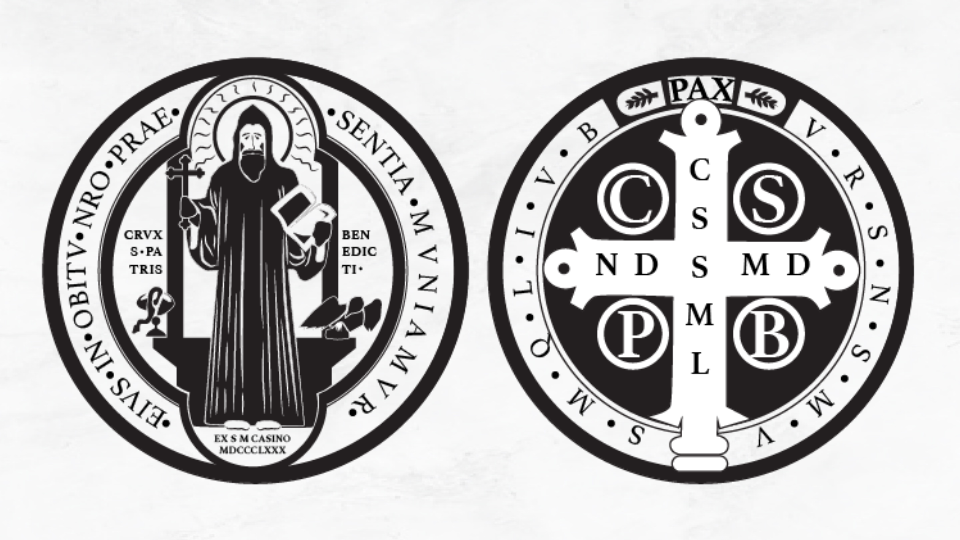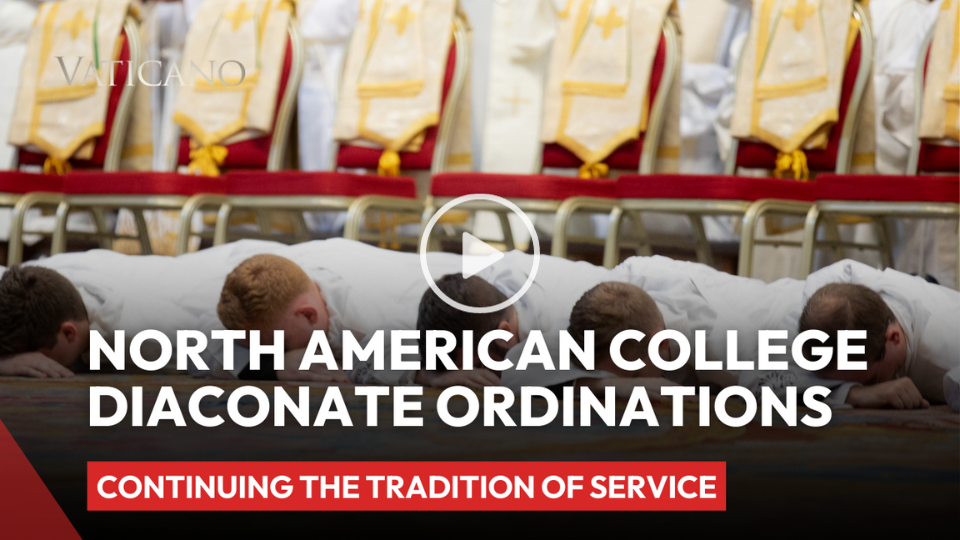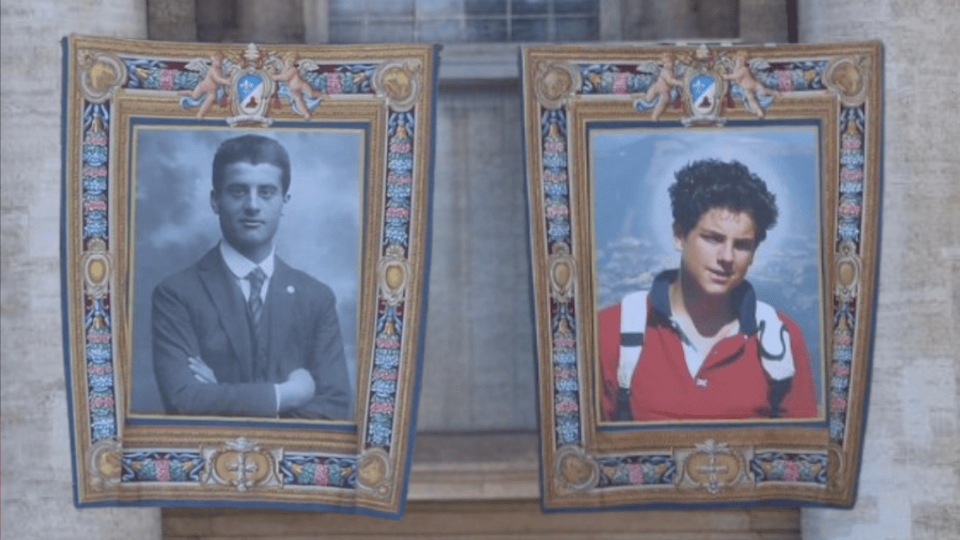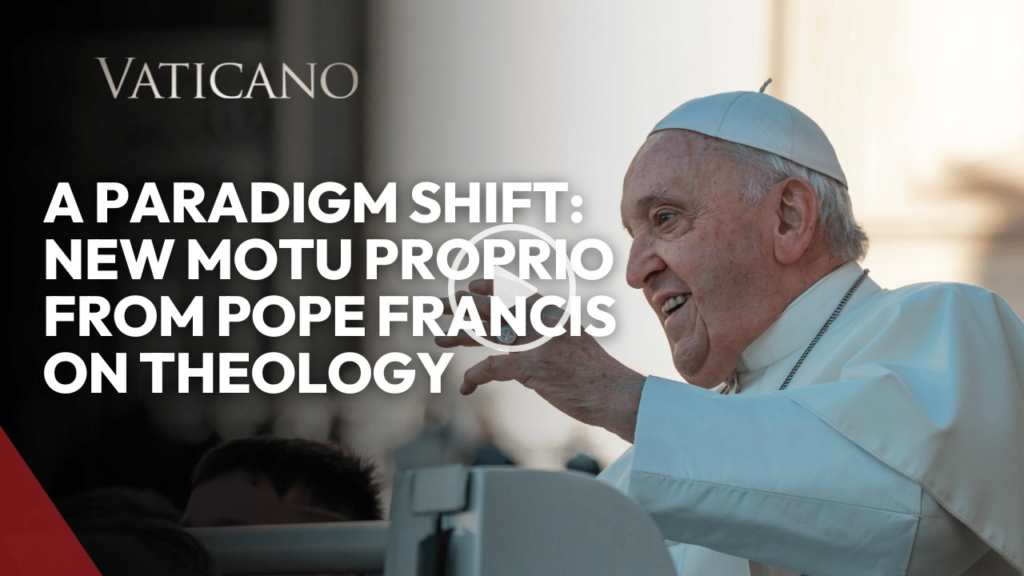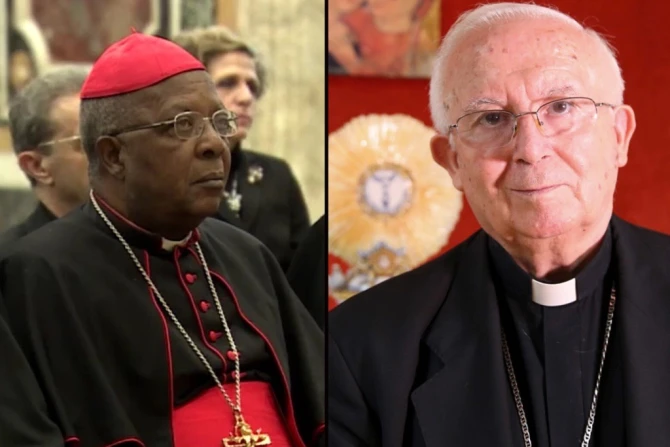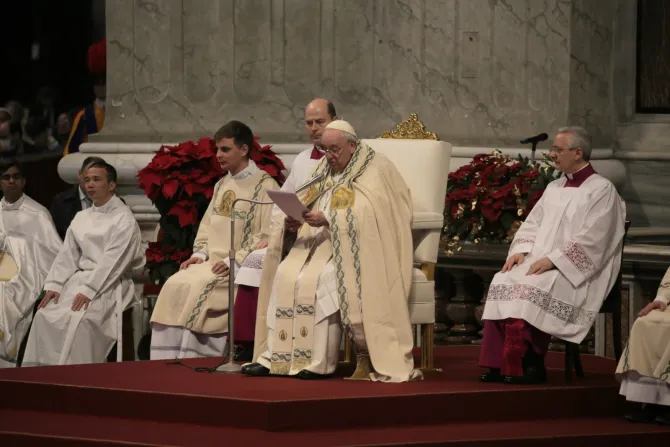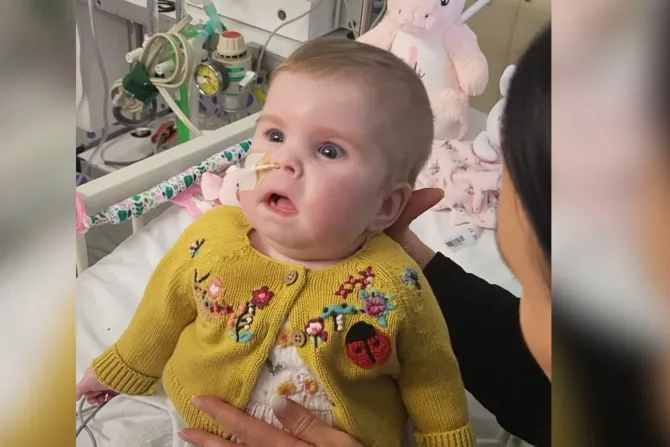The Saint Benedict Medal, recognized by the Catholic Church, possesses great power of exorcism and liberation from demonic influences. However, it is essential to understand that its efficacy does not lie solely in its physical appearance or the engraved prayer, as this would fall into superstition. Rather, the true power of the medal resides in Christ Himself, who grants it to the Church through the fervent disposition of those who use it.
The Origins and Miraculous Healing Associated with the Medal
Originating from ancient times, the effectiveness of the Saint Benedict Medal or Cross deserves special attention. Its popularity surged in the second decade of the 11th century when a man named Brunone, residing in Alsace, was miraculously healed from a severe illness after being presented with the aforementioned Medal. Following his recovery, Brunone became a Benedictine monk and was later elected Pope, taking the name Leo IX (later canonized as a saint). In 1742, Pope Benedict XIV approved the Medal and granted indulgences to those who carried it with faith.
Deciphering the Symbolism on the Front and Back of the Medal
The front of the Medal portrays an image of Saint Benedict at its center. In his right hand, he holds a cross, symbolizing the saving power of Christ and the evangelizing work of the Benedictines throughout the centuries. To his right, a broken cup signifies the rebellious monks who attempted to poison Saint Benedict but failed when he made the sign of the cross over it. On his left, a raven holds a poisoned loaf of bread, another failed attempt on the saint’s life.
Above Saint Benedict’s head are the words: “Crux Sancti Patris Benedicti” (Cross of the Holy Father Benedict). Surrounding the edge are the words: “Ejus en obitu nostro praesentia muniamus” (May we be strengthened by his presence in our hour of death). Beneath his feet, the letters “EX SM CASINO MDCCCLXX” (From the holy Monte Cassino, 1880) are inscribed.
The reverse side of the Medal features a large cross as its dominant symbol. Each of the cross’s four sides contains the initials: “C.S.P.B.” (Crux Sancti Patris Benedicti) meaning “Cross of the Holy Father Benedict.” In the vertical line of the cross, the initials “C.S.S.M.L.” (Crux Sacra Sit Mihi Lux) signify “May the Holy Cross be my light,” while the initials “N.D.S.M.D.” (Non Draco Sit Mihi Dux) in the horizontal line express “May the devil not be my guide.”
Around the border, starting from the top and progressing clockwise, are the initials of the exorcism prayer:
“V.R.S.” (Vade Retro Satana): “Begone, Satan” “N.S.M.V.” (Non Suade Mihi Vana): “Do not suggest to me vain things” “S.M.Q.L.” (Sunt Mala Quae Libas): “What you offer is evil” “I.V.B.” (Ipse Venena Bibas): “Drink your own poison”
The prayer concludes with “PAX” (Peace). Thus, the prayer recites as follows: “May the Holy Cross be my light, and may the devil not be my guide. Begone, Satan. Do not suggest to me vain things. What you offer is evil. Drink your own poison. Peace.”
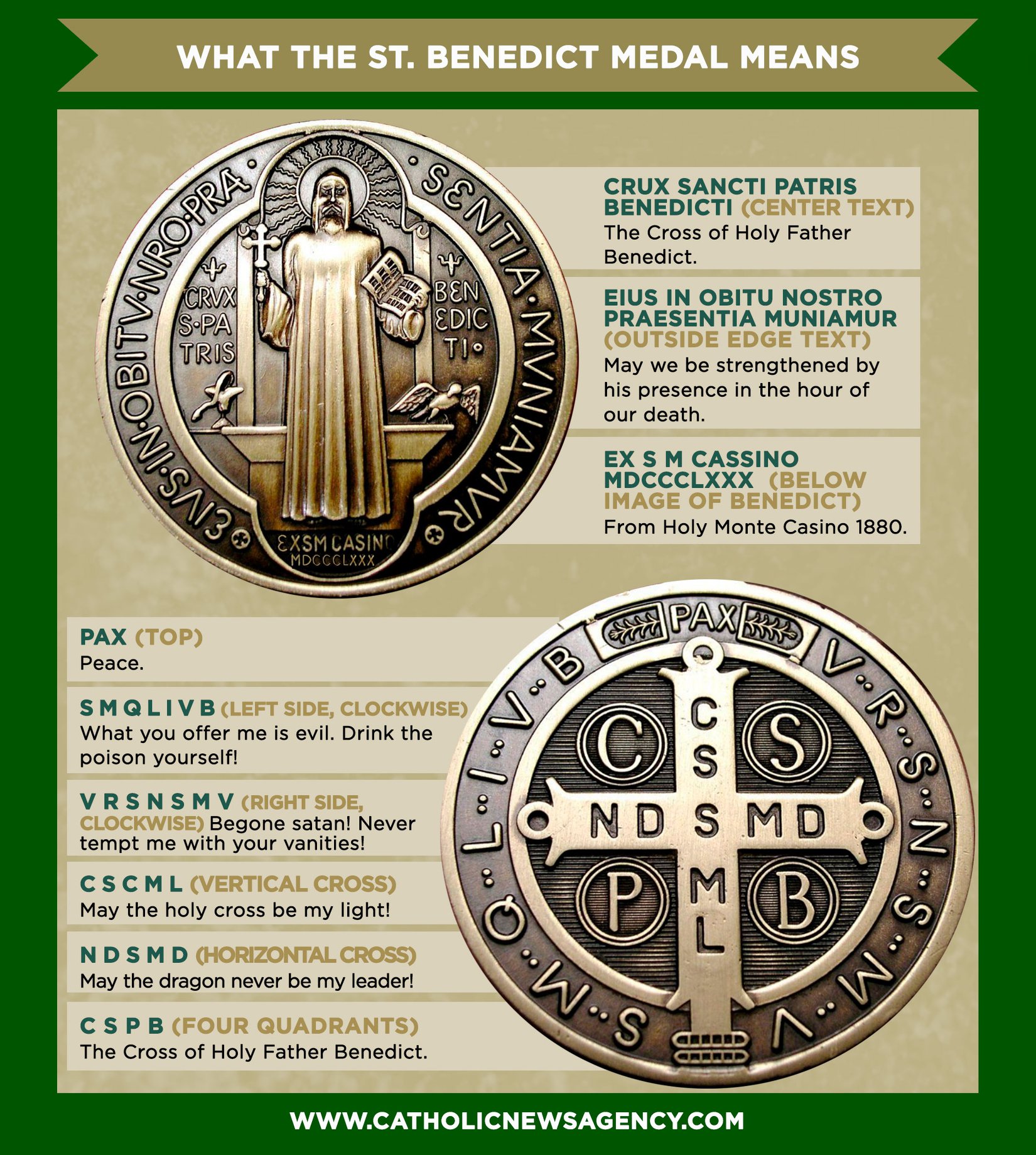
It is important to emphasize that the Saint Benedict Medal’s power does not diminish due to ignorance or lack of devotion from some individuals. Its effectiveness lies in the faith and devotion of the wearer, rather than in superstition. As believers, it is vital to remember that Christ Himself has conferred power through His mandate, as recorded in Matthew 18:18.

